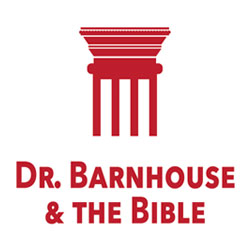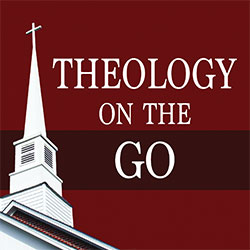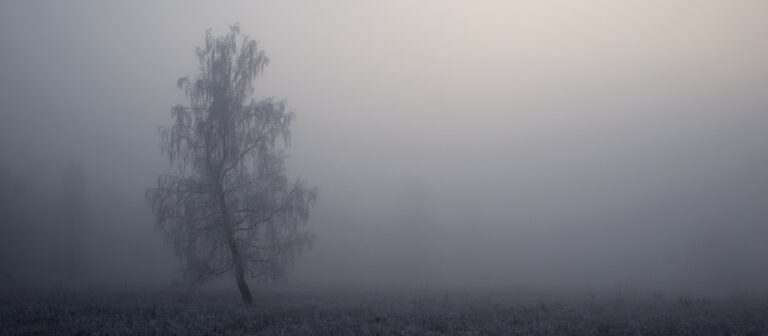
Matilde Calandrini – Fighting for Education and Religious Freedom
Matilde Calandrini – Fighting for Education and Religious Freedom
In 1831, 37-year old Matilde Calandrini moved from Geneva to Pisa for health reasons. Tuscany, the enchanting Italian region where Pisa was located, had been the home of her ancestors at the time of the Protestant Reformation. They had lived in Lucca, just twelve miles north of Pisa, the same city where the Italian Reformer Peter Martyr Vermigli preached and founded his school for the promotion of biblical knowledge.
In fact, the Calandrinis were there to hear Vermigli preach the pure message of the gospel. They were also there in 1542, when he escaped the arm of the Inquisition and fled to Switzerland. They followed soon after finally settling – after many vicissitudes – in Geneva.
In that historically Protestant town, they joined other important families, such as the Turretins, in the administration of the Italian-speaking church. Some became pastors. Others became influential in the life of the city, as magistrates, authors, professors, and bankers.
By the time Matilde was born in 1794, the family had resumed the affluence and notoriety they had achieved in Italy. And they had continued in the Protestant faith, even if the doctrinal standards in Geneva had sorely degenerated after the death of the theological giant Francis Turretin (1623-1687).
Most recently, however, Geneva had experienced a wave of Réveile, ignited by the Scottish missionary Robert Haldane (1764-1842), and Matilde had been strongly affected.
A Needed Mission
In Italy, Matilde found a beautiful country and “a population whom God had richly endowed but whom men had cruelly abused.”[1] She found the Roman Catholic Church’s efforts to keep the population under their control suffocating.
She was especially appalled by the lack of education in a country that had once witnessed the flourishing of the Roman classics, Medieval universities, and the Renaissance. In 1831, about 78% of the population was still illiterate. The few available schools were run by the church for the wealthy. There was no interest in educating the poor. It was considered a waste of time. And no education was offered to those of a different faith (who, according to the Roman Catholic Church, had no business living in Italy). Women were especially excluded from learning.
As a Protestant, Matilde knew that education had the additional value of allowing people to read the Bible. But the Church of Rome had a different view. It was better for the common people to leave the Bible to the priests, who were trained to follow the church’s interpretation.
Determined to bring about a change, Matilde discussed her ideas with some influential Italians and with members of the English-speaking community in Pisa and the Swiss Evangelical Church in Florence, finding much support.
In fact, a friend of her family, Luigi Frassi (1775-1838), allowed her to use his house near Pisa for a daytime kindergarten where she could teach the daughters of poor, working parents. It was an exciting venture, and Matilde put all her energies into its fulfillment. There were also talks of starting a similar school for boys. Frassi’s intervention was crucial because Matilde, being Protestant, would have never been allowed to open a public school.
A Dangerous Gospel
But her actions didn’t go unnoticed by the local priest. Knowing that Matilde was a Protestant, he tried to stop her work on the account that she was proselytizing. In reality, Matilde was careful not to talk about religion during work hours, although nothing stopped her from sharing the gospel after work and outside of her school.
And this she did, attracting many Italians who were dissatisfied with the scarcity of the Roman Catholic Church. Soon, her house became a meeting place for prayer and Scripture reading, as well as a center for free discussion at a time when ideas were strongly monitored and regulated. Some of her visitors shared in the brewing dream of a unified Italy with religious freedom for all. Together with Matilde, they started a newspaper to raise awareness for the need of educating the poor.
The man in charge of education in the Granduchy of Tuscany was the young nobleman Piero Guicciardini (1808-1886), who was impressed by Matilde’s school. He was also highly interested in her evangelical message, and eagerly joined the meetings at her home. He also attended the Swiss church in Florence. In 1836, he defined himself as “born again.” At the same time, he continued his political career, until 1850, when he had to decline the prestigious appointment of City Counselor, which required an oath of allegiance to the Church of Rome.
But even Guicciardini could not spare Matilde from opposition from both the Granduke (who considered her newspaper too controversial) and the local bishop, who kept insisting that a Protestant teacher should not be allowed to teach. In a meeting, the school board decided that Matilde would not be teaching but would direct the work behind the scenes.
Unsatisfied by this compromise, in 1845 the bishop requested that Matilde discontinued conducting teachers’ meetings, where she could potentially exercise some religious influence. At this point, Matilde replied with a fiery letter, vindicating her religious rights and denouncing the interference of the ecclesiastical authorities on the civil administration of schools.
But, in Italy, the ties between church and state were still too strong. When, in 1846, Matilde returned to Geneva for a customary visit to her family, the government issued a ban, forbidding her reentry. The flood of letters of protest that she and her friends sent to the Granduke had no effect. When she tried to go back through the port in Livorno, the authorities didn’t even let her off the ship.
She then remained in Geneva, where she kept in touch with her teachers and continued to advocate for the opening of Italian schools for the poor. When she was finally able to return to Italy for a visit, she was able to see her school progressing well and more similar projects under way. She died in Bessinge, near Geneva, on February 12, 1866.
A Hard-Fought Victory
In the meantime, Guicciardini was also arrested for his beliefs, imprisoned for six months, and condemned to the exile. He moved to England, where he was warmly greeted. There, he worked on a new edition of the Italian Bible, originally translated in 1607 by another exiled Italian, Giovanni Diodati (1576-1649).
As many other exiles, he kept his correspondence with friends in his country and contributed to the smuggling of Italian Bibles – often shipped to Italy in boxes addressed to commercial enterprises, or wrapped in waterproof material and moved underwater, under the nose of custom officials. From there, respectable ladies would transport a few copies, hidden in their purses of under their clothes.
Guicciardini was only one of many who suffered similar forms of religious persecution. Around the same time, two cases made international news: the arrest and prolonged imprisonment of an Italian Protestant couple, Francesco and Rosa Madiai, and the abduction by Roman Catholic authorities of 6-year-old Edgardo Mortara, a Jewish boy from Bologna, under the pretext that he was secretly baptized by his nanny and therefore belonged to the Roman Catholic Church.
Edgardo was never returned to his family. In the year 2000, the Catholic Church beatified Pius IX, the pope who authorized the abduction and, undeterred under pressure, claimed he would do it again.
The capture of Rome through the famous Breach of Porta Pia, on September 20, 1870, marked the end of the pope’s political power and consequent abuse of authority. For the Mortaras, this was not a relief, because their son, now free, had been trained to become a priest and refused to go home.
But for Italian Protestants, September 20 marked the day when the gospel could be preached freely. The symbolical presence, in front of the victorious troops, of an Italian Protestant with a cartload of Italian Bibles (pulled by a dog cleverly named Pius IX), proclaimed a powerful message. The long-forbidden Bible was now available to all.
[1] Daisy D. Ronco, La Vita e le Opere di Matilde Calandrini, Bangor: University of Wales, 1995, 16.

























